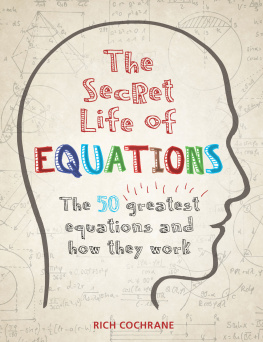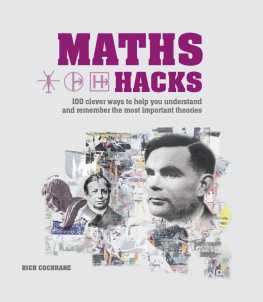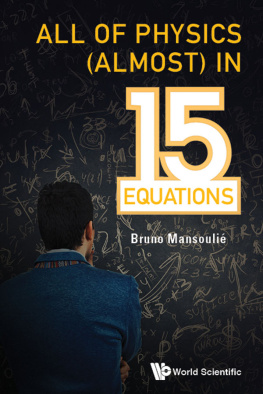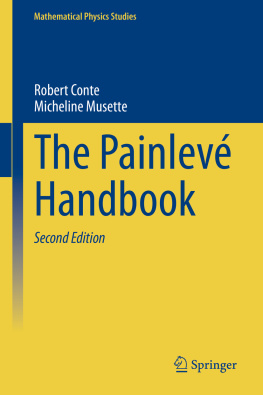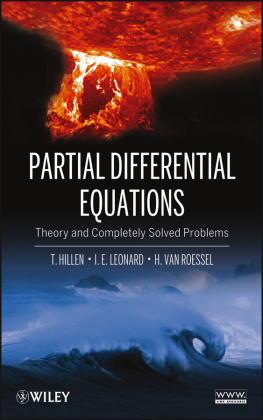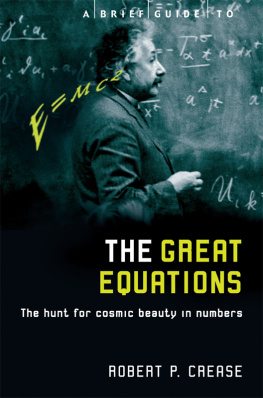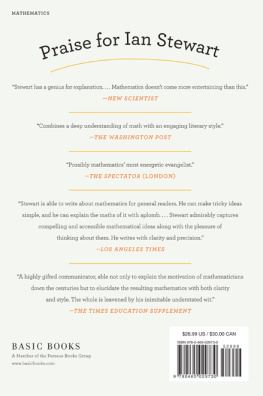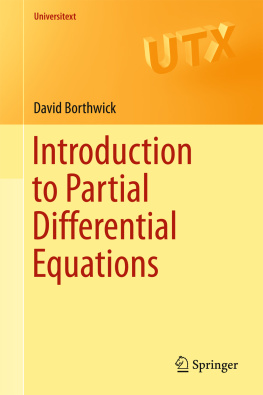The SecRet
Life of
The SecRet
Life of
The 50 greatest equations and how they work
RICH COCHRANE
An Hachette UK Company www.hachette.co.uk First published in Great Britain in 2016 by Cassell, a division of Octopus Publishing Group Ltd Carmelite House
50 Victoria Embankment London EC4Y 0DZ www.octopusbooks.co.uk www.octopusbooksusa.com Text copyright Richard Cochrane 2016 Design & layout copyright Octopus Publishing Group Ltd 2016 All rights reserved. No part of this work may be reproduced or utilized in any form or by any means, electronic or mechanical, including photocopying, recording or by any information storage and retrieval system, without the prior written permission of the publisher.
Richard Cochrane asserts the moral right to be identified as the author of this work. ISBN 978 1 84403 858 9 A CIP catalogue record for this book is available from the British Library.
Printed and bound in China 10 9 8 7 6 5 4 3 2 1
www.hachette.co.uk
www.octopusbooks.co.uk
www.octopusbooksusa.com
Contents
What Have You Done For Me
Lately?
Introduction
beginners will appreciate and experts will forgive. For similar reasons most of the graphs dont have numerical scales and whatnot; I suppose this will enrage maths teachers, but the removal of extraneous details keeps our focus on the overall shape of whats going on.
Some time around AD 820 the Persian mathematician Abu Abdallah Muhammad ibn Musa al-Khwarizmi wrote his Compendious Book on Calculation by Completion and Balancing. There he gave us the word algebra and gathered together some of its basic principles. Fundamental to algebra is the notion of balance, which the equation has come to embody: if we put an apple on one side and an orange on the other, the scales balance when the two weights are equal. And thats what every equation says: these two things balance.
How to use this book
This book could be read from cover to cover, like a novel, but most people dont read maths books that way. Maths is a vast, interconnected network of ideas that asks to be explored rather than watching it whizz by in a predefined order. For that reason this book contains many cross-references and you may well find that one section makes more sense when you come back to it after reading another, later one. Dont be dismayed by this; its how most of us feel most of the time when studying maths. Even great mathematicians sometimes report feeling lost and confused when learning a new area of the subject. They also describe the joy of finding unexpected connections, some of which can be very profound and beautiful.
When meeting any new mathematical idea, most of us need to start with an intuitive picture of whats going on. This book cant get too technical every one of its sections has been the subject of whole books, sometimes many advanced and complicated ones. What it can do is make the general ideas plain and indicate ways in which those ideas can talk to each other, sometimes across widely different parts of mathematics, science and everyday life. This inevitably involves some quite drastic simplifications, which I hope
Notation
Still, this is a book about equations. Many popular maths books carefully chart their route to avoid too many scary-looking formulas. This one takes the opposite approach. Mathematicians notation is designed to make life easier, not more difficult. In this respect its just like other special forms of notation, such as that used by musicians, editors, choreographers, knitters and chess-players. If you cant parse it, its completely incomprehensible. But if you can, then, like a picture, this notation can do the work of many cumbersome words.
Our way of writing maths down isnt always logical. It developed over hundreds of years and it can be quirky, weird or downright silly; like most things it shows traces of the historical process that produced it. Perhaps someone could invent a whole new way of writing equations that would be more coherent, but only a foolhardy reformer would dare to try. So dont worry if sometimes its clear to you what a symbol represents but not why it looks the way it does. At some point you learned to read the words on this page; that was a much more difficult task, involving a system of notation thats almost completely arbitrary. If you managed that, you can surely do this too.
Ive assumed you know about positive and negative whole numbers and what a fraction is, along with the following principles from algebra. Letters (or other symbols) can be used to stand for numbers that are unknown or that can vary. Multiplying these unknown quantities can be
Introduction
Table of Symbols
Heres a list of the most important symbols that crop up in multiple sections, along with the place where theyre first introduced.
x Square root of x [Pythagorass Theorem, page 10]
Sum [Zenos Dichotomy, page 18] lim Limit [Zenos Dichotomy, page 18] Infinity [Zenos Dichotomy, page 18] Pi [Eulers Identity, page 40] sin, cos, Trigonometric functions [Trigonometry, page 14] tan Integral [The Fundamental Theorem of Calculus, page 26]
Derivative of y with respect to x (other letters sometimes replace y and x) [The Fundamental Theorem of Calculus, page 26]
Second derivative of y with respect to x (other letters sometimes replace y and x) [The Fundamental Theorem of Calculus, page 26]
x, x First and second derivatives of x with respect to time (alternative notation) [Curvature, page 30]
log, ln Logarithms [Logarithms, page 36] i The square root of -1 [Eulers Identity, page 40]2 Laplacian [The Heat Equation, page 80] div, curl Derivatives of vector fields [Maxwells Equations, page 92]
Gradient [The Navier-Stokes Equation, page 96] ,, Logical not, and, or [De Morgans Laws,
page 126]
P(x) The probability of event x [The Uniform Distribution, page 162]
P(x|y) The conditional probability of x given y [Bayess Theorem, page 168]
dy/dx
d2y/dx2
represented by putting the letters next to each other, so that
and dividing one number by another is conveniently represented by a fraction:
Finally, the all-important equals sign says that the total of everything on one side of it is exactly the same as on the other. All other notation will be introduced as we go along.
Each equation works like a little machine with moving parts; our main task is to understand what each part does and how it interacts with all the others. Sometimes that means spending time unpacking or decoding notation. Sometimes it means working through a simple example. Sometimes it means getting to the bottom of something obscure or, by contrast, catching a hurried glimpse of it as we zoom past.
In fact, in terms of a traditional sequence of maths education, this book is incredibly uneven: one minute youre dealing with a bit of high-school algebra, then on the next page you hit something youd meet only late-on in a university degree.
Ive chosen to ignore that, because mathematical subjects dont come with predefined levels of difficulty. The arithmetic you learned as a child is, it turns out, incredibly deep and mysterious, while many so-called advanced topics are actually pretty easy to grasp once you get past the jargon. Go with the flow, understand what you can and look more deeply into the parts that grab your interest. There isnt a wrong way to do this.
Introduction
The Shape of Space
GEOMETRY AND NUMBER
Pythagorass Theorem
The sides of a triangle tell us something basic about how space works.
Whats It About?
Take any three sticks of any lengths. Call the lengths A, B and C, and suppose A is the longest one (or joint-longest one, if necessary). Youll find you can make the sticks into a triangle as long as A is less than B + C. If you want to make a triangle with a right angle a 90 corner, like the kind on a square or rectangle you have to have a very special set of sticks, though. In fact, if you have any two B and C sticks already fixed in a right angle (making an L-shape), Pythagorass Theorem tells you how long stick A must be to complete the triangle.
Next page
